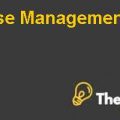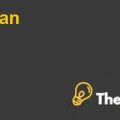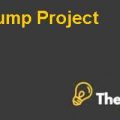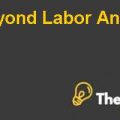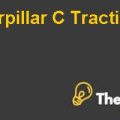
HEDGING ASSIGNMENT
Q1.)Suppose that the spot price of the euro is currently 90 cents. The one-year future price is 93 cents. Is the current rate higher in the United States or the euro zone?
Answer:
To answer the given scenario, Interest Rate parity Theory explains the relationship between the spot rate and forward and future rate of currencies, in other words, according to this theory, differences between the interest rate of two countries is adjusted by forward premium or discount on the foreign currencies. As current price of U.S is higher than Euro zone as in giving condition interest rate of US is 3% at given future spot rate, the higher the interest rate higher will be the price. (Refer Excel Sheet Q#1 for calculation)
Q2.)
a.) The spot price of the British pound is currently $1.60. If the risk-free interest rate on one-year government bonds is 4% in the United States and 8% in the United Kingdom, what must be the forward price of the pound for delivery one year from now?
Answer:
Please refer to excel attachment for the forward price.
b.) How could an investor make risk-free arbitrage profits if the forward price were higher than the price you gave in answer to (a)? Please provide a numerical example.
Answer:
Interest Rate Parity (IRP) Theory
Interest Rate Parity (IRP) theory is used to examine the relationship between at the spot rate and equivalent forward (future) rate of currencies. If there is no arbitrage, (the transaction of buying and selling of shares and currencies in financial markets, that is buying in one market and selling in another market for profit). The IRP theory explains that the differences between the exchange rate and interest rate, is adjusted by the premium or discount for the forward exchange rate of the foreign currencies. According to theory of Interest Rate Parity (IRP) the extent the differences between theinterest rate of two countries should be equivalent of the forward premium or discount on an overseas currency ina relationship.
Interest Rate Parity Flowchart.
Examples
For our understanding purpose assumes we are investing € 1000 for 1 year. We can assume two investment scenarios.
Case I: Domestic Investment
Assume that the spot exchange rate of $1.2245/€ 1 in the U.S.A. So we can exchange investment of into USD as, € 1000 @ $1.2245 = $1224. 50. So at the year end the future price of our investment at the 3% interest rate per annum will be as following. Amount of investment $1224. 50 @ 3.0% for 1 year, which earns $1261. 79 at the end of the year.
Case II: Foreign Investment
Similarly, we can invest € 1000 in a foreign European market, assume at the rate of 5.0% for 1 year. But we will purchase forward of 1 year to fix the future exchange rate at $1.20025/€ 1 since we require to exchange back € 1000 into USD, i-e domestic currency. Value of € 1000 @ of 5.0% for 1 year = € 1051.27, and convert € 1051.27 @ $1.20025 = $1261. 79
Therefore, if there is no arbitrage, the Return on Investment (ROI) is same irrespective of our choice of investment method, which is domestic investment or foreign investment.
Types of Interest Rate Parity:
1. Covered Interest Rate Parity (CIRP)
Covered Interest Rate theory explains that exchange rate forward premiums (discounts) balance the interest rate differentials between two countries. In other words, differentials between two countries interest rate is covered by the premium or discount on currencies spot/forward, otherwise investors would earn a complete arbitrage profit.
Covered Interest Rate Examples
Assume the example of Google Inc., the U.S. based multi-national company, requires to pay its in employees in Europe at the month end.
Google Inc. can succeed through several methods:
- To cover the transaction to nullify the impact of exchange rate fluctuation. Google inc. can purchase Euro forward 30 days to fix the exchange rate. Google would invest in United States dollars for 30 days till it must convert dollars to Euro in a month.
- In either case Google Inc. can cover this transaction through the conversion of dollars to Euro at the current spot exchange rate. Invest European bond (in Euro) for 30 days (equally long out Euro for 30 days) then pay its obligation in Euro at the end of the month.
Under this model Google Inc. is certain of the interest rate that it will gross, so it may convert fewer dollars to the Euro today as its Euro will grow via interest earned. This is also called covering, as the risk of exchange rate fluctuation is reduced by converting dollars to Euro at the spot..................
This is just a sample partial case solution. Please place the order on the website to order your own originally done case solution.


